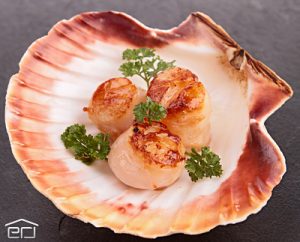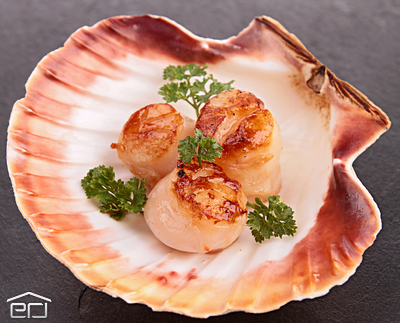 It is July, first, 2018, opening day of the scallop season in Citrus County. A young girl sitting on the transom of the family boat, rinses her pink mask in the clear shallow waters. She slips on her matching fins, settles the mask on her face and bites gently on her snorkel’s mouthpiece. With barely a splash, she slips feet-first into the warm Gulf water. Moments later, her family joins her by the transom. Their scalloping adventure is about to begin to collect delicious bay scallops.
It is July, first, 2018, opening day of the scallop season in Citrus County. A young girl sitting on the transom of the family boat, rinses her pink mask in the clear shallow waters. She slips on her matching fins, settles the mask on her face and bites gently on her snorkel’s mouthpiece. With barely a splash, she slips feet-first into the warm Gulf water. Moments later, her family joins her by the transom. Their scalloping adventure is about to begin to collect delicious bay scallops.
Before everyone goes off in different directions, Dad wants to mention a few things. Dad cautions everyone to stay within one hundred feet of the boat. Swimmers must listen for boat motors and take a look around above the water every once in a while.

Safety First
Although regulations allow for a snorkeler or scuba diver, in open water, to be within three hundred feet of a boat flying the standard red dive flag, it is a good safety measure to keep everyone closer. The diver-down flag must be displayed in such a way that it offers an unobstructed 360 degree view to boaters. Individuals may display a twelve by twelve-inch diver-down flag in lieu of the larger vessel flag. These usually consist of the flag on a two or three-foot fiberglass rod or wood shaft attached to a buoy and towed on a short tether by the diver.
Scallop Gear
The kids had already spotted several scallops right by the boat and mesh bags in hand, Dad lets them go. Mom is a little squeamish about picking the scallops up with her bare hands so she carries a little hand net. By hand or with a landing or dip net are the only two methods permitted by regulations for collecting bay scallops. As these snorkelers explore the turtle grass they place one after another of the mollusks in their catch bags.

Suddenly there is a startled gurgle from the girl as she raises her head above the water giggling. A scallop she was about to grab squirted away at the last second. Bay scallops have many tiny, blue eyes along the outer rim of the shells. This helps them detect movement. When someone approaches, the shellfish, scientific name of Argopecten Irradians, can squirt away. The scallop does so by rapidly and forcefully snapping its shell closed and thus expelling water to propel itself. Of course this just adds to the fun. Recovering from her surprise, the girl tosses this scallop with the others in her catch bag.
Limiting Out
The bags are getting heavy and Dad calls every one back to the boat. The kids are reluctant to leave the water, but cold drinks and sandwiches entice them to come aboard. A friendly argument quickly ensues as to who caught the most scallops. The kids jokingly say Mom should be disqualified for using a net. While they each count their catch, Dad reminds them of the bag limits. You’re allowed 2 gallons whole bay scallops in shell, or 1 pint of bay scallop meat per person or a maximum of 10 gallons of whole bay scallops in shell, or 1/2 gallon bay scallop meat per vessel.
By now, Mom, has defied disqualification and is ahead by six. By consensus, they decide to move a couple of hundred yards to another grassy area. While Dad starts the outboard, junior is pulling up the anchor and Mom and daughter are combining their catch into a gallon milk jug that has had the top cut off. To their surprise and delight, they have almost a full gallon of whole scallops in shell. They still have the rest of the day ahead of them and the season is open until September 24th promising many more days of scalloping fun.
 Tis’ the Season to Scallop
Tis’ the Season to Scallop
Dozens of scenes like this occur every day during scallop season in Citrus County as families and friends get together for these very special days of fun and tasty dining.
If you are not expert at opening the scallop and extracting the meat, there are plenty of folks on the water and at many docks who will do it for you for a nominal fee. There are also many restaurants that will cook this succulent fare for you and add the trimmings. Come join in the fun!
So if being on the water is one of your passions and a beautiful, well built, waterfront home is in your future, you cannot do better than to make your home in this natural paradise.
Please contact us today for information on waterfront homes or lots for sale on the Homosassa River, Crystal River or on Florida’s Nature Coast.
Florida Fish and Wildlife Conservation Commission Regulations can be found here:

There is something for everyone when you are at your leisure in Citrus County Florida. So if you are looking for an idyllic setting to call home, contact one of our friendly professionals at Coldwell Banker Next Generation Realty of Citrus.
J Espin







